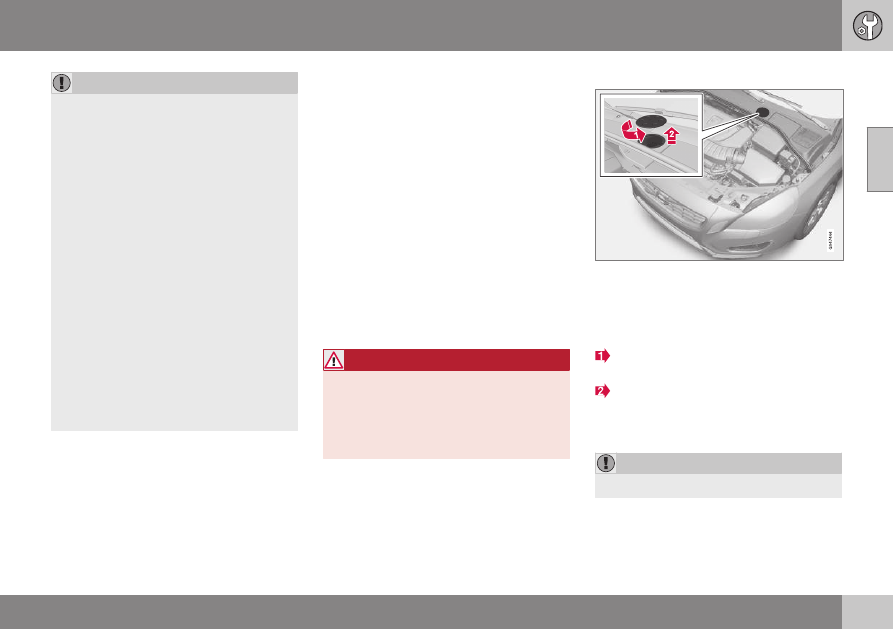Volvo V60 Plug-in Hybrid (2015 year). Instruction - part 21

10 Maintenance and service
10
355
•
A high content of chlorine, chlorides
and other salts may cause corrosion in
the cooling system.
•
Always use coolant with anti-corrosion
agent as recommended by Volvo.
•
Ensure that the coolant mixture is 50%
water and 50% coolant.
•
Mix the coolant with approved quality
tap water. In the event of any doubt
about water quality, used ready-mixed
coolant in accordance with Volvo rec-
ommendations.
•
When changing coolant/replacing
cooling system components, flush the
cooling system clean with approved
quality tap water or flush with ready-
mixed coolant.
•
The engine must only be run with a
well-filled cooling system. Otherwise,
temperatures that are too high may
occur resulting in the risk of damage
(cracks) in the cylinder head.
Brake and clutch fluid - level
The brake fluid level should be between con-
tainer's MIN and MAX marks.
Checking the level
The level must be between the MIN and MAX
marks that are visible inside the reservoir.
Check the level regularly.
Change the brake fluid every other year or at
every other regular service.
The fluid should be changed annually on cars
driven in conditions requiring hard, frequent
braking, such as driving in mountains or tropi-
cal climates with high humidity.
For capacities and recommended brake fluid
grade, see Brake fluid - grade and volume
WARNING
If the brake fluid is under the MIN level in
the brake fluid reservoir, do not drive fur-
ther before topping up the brake fluid.
Volvo recommends that the reason for the
loss of brake fluid is investigated by an
authorised Volvo workshop.
Filling
The fluid reservoir is located on the driver's side.
The fluid reservoir is protected under the
cover over the cold zone in the engine com-
partment. The round cover must be removed
first before the reservoir cap can be reached.
Turn and open the cover located on the
covering.
Unscrew the reservoir cap and fill the
fluid. The level must be between the MIN
and MAX marks, which are located on
the inside of the reservoir.
Do not forget to refit the cap.